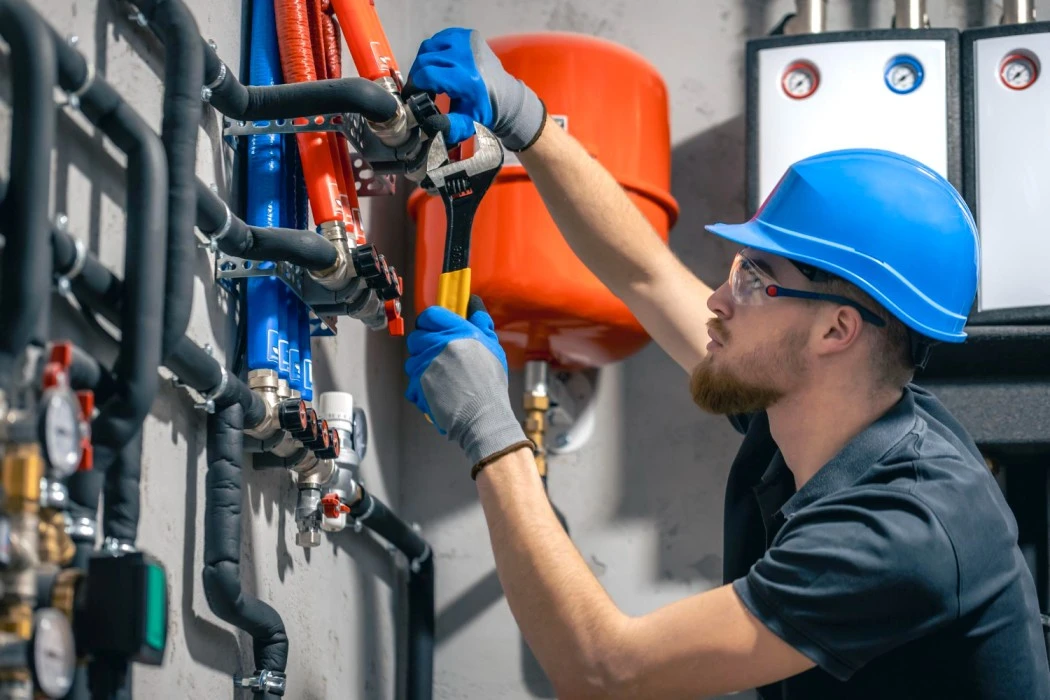Are you thinking about starting your own plumbing business in Texas? That’s a great idea! Texas is growing rapidly, with new homes and buildings popping up everywhere. But, like starting any business, you will need a good plan, hard work, and the right steps to succeed.
In this guide, I’ll show you exactly how to turn your plumbing skills into a successful business, no confusing jargon, just straightforward advice you can use right away.
Take inspiration from my friend John, a plumber in Houston who started small and now runs a busy, reliable company. Today, I’ll share with you his journey, lessons, and tips for entrepreneurship.
Why Start a Plumbing Business in Texas?
Texas is one of the fastest-growing states in the U.S., with cities like Austin, Dallas, and Houston experiencing rapid residential and commercial development. This growth creates a high demand for skilled plumbers and business starters.
Plus, Texas has straightforward licensing requirements compared to other states, making it easier to start.
John, for instance, noticed his neighborhood in Houston lacked affordable emergency plumbing services. After working as an apprentice for 4 years, he decided to fill the gap. Today, his business is growing, and earns six figures annually.
His story proves that with grit and strategy, success is within reach.
1) Get the Right Plumbing License
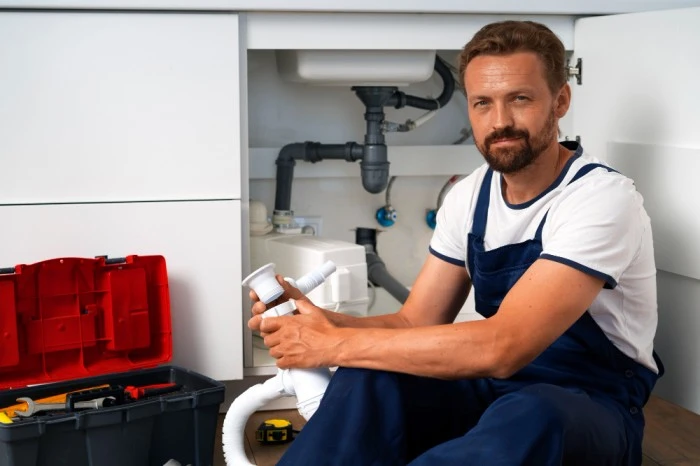
Before you start providing services, you need a plumbing license. Texas has strict laws to ensure only qualified professionals work on plumbing systems.
Types of Plumbing Licenses in Texas
| License Type | Requirements | Cost |
|---|---|---|
| Apprentice Plumber | No experience require, you must register with the Texas State Board of Plumbing Examiners (TSBPE) | $15 |
| Tradesman Plumber-Limited | 4000 hours of experience + pass exam | $35 |
| Journeyman Plumber | 8000 hours of experience + pass exam | $40 |
| Master Plumber | Journeyman for at least 1 year + pass exam | $75 |
My Friend Tip: If you’re starting 1st time, begin as an apprentice, gain experience, and slowly upgrade your license.
Step 2: Create a Solid Business Plan

A business plan is your blueprint for success. This helps you define goals, understand your market, and secure money.
Key Elements of a Plumbing Business Plan:
- Market Research: define your target customers like homeowners, contractors and local competitors.
- Services Offered: Do you want to focus on repair, installations, or eco-friendly solutions? John specializes in water-saving fixtures to stand out.
- Pricing Strategy: Research local rates. The average hourly rate for plumbers in Texas is $45 to $150.
- Financial Projections: Estimate startup costs such as tools, licensing, insurance & monthly expenses.
John’s Tip: I spent weekends talking to local hardware stores about common plumbing problems in the area. That’s how I realized eco-friendly upgrades were in demand!
3) Get Your Tools and Work Vehicle
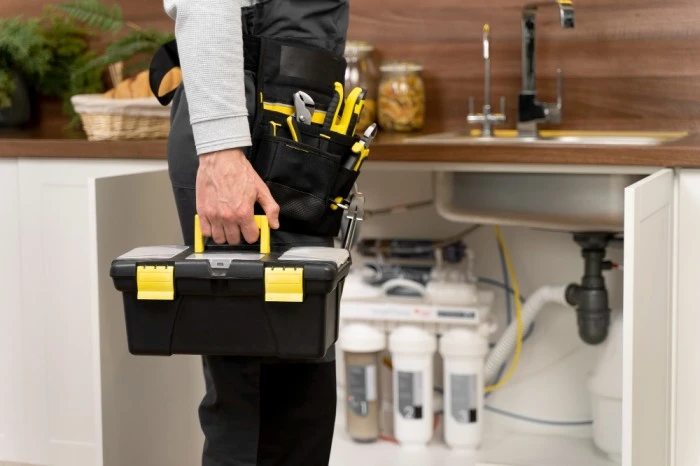
To run your plumbing business, you need two things: super-quality equipment and a reliable van or truck to carry them around.
Tools You’ll Need:
- Pipe wrenches (to tighten or loosen pipes)
- Plungers and drain snakes (to unclog toilets and sinks)
- Pipe cutters (for cutting pipes to the right size)
- Leak detectors (to find hidden leaks)
- Water pressure gauges (to check water flow)
Your Work Vehicle:
A van or truck is perfect for carrying your tools and supplies. Pro tip: Add your business name and phone number to the van, it’s like a free ad!
For Example, John bought a used van for $8000, painted his logo on the side, and got his first customer just from someone spotting his van in a parking lot!
4) Register Your Business & Get Insurance
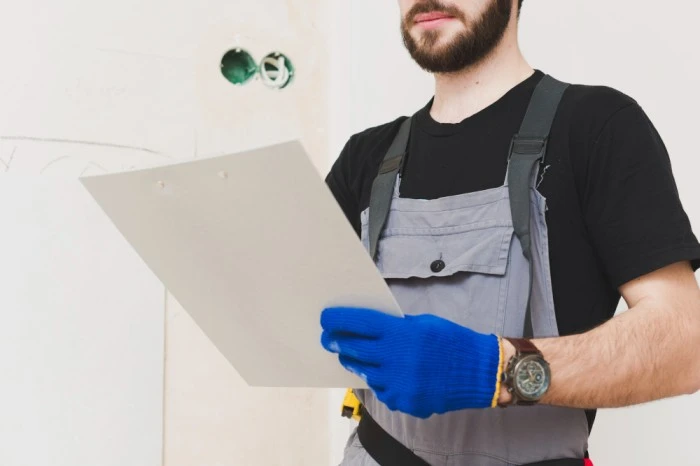
To legally run your plumbing business in Texas, follow these steps:
1. Register Your Business
- Start an LLC (Recommended): Go to the Texas Secretary of State website to register. It save your personal things like your home or savings if your business has problems.
- Get a Tax ID Number (EIN): Apply for free on the IRS website. You’ll need this for taxes and hiring employees in the future.
2. Get Business Insurance
- General liability insurance save the cost if you accidentally damage a client’s property or cause someone to be injured.
- If you hire employees, workers’ compensation insurance helps pay for medical bills if they are injured on the job.
- If you use a van or truck for work, Vehicle Insurance covers accidents or damage.
My friend John in Houston skipped insurance to save money. But when a pipe burst flooded a customer’s kitchen, he had to pay $10000 himself! Insurance could’ve covered it. Don’t risk it, get insured!
5) Decide What to Charge & What Services to Offer
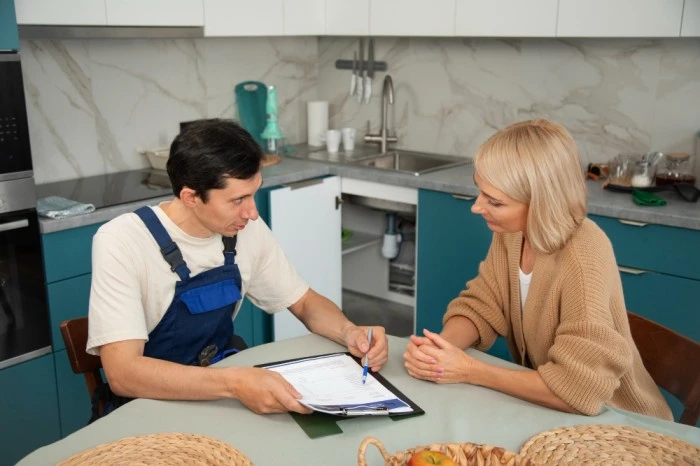
Before you start working, figure out what plumbing jobs you’ll do and how much you’ll charge.
Popular Services and Average Prices in Texas:
| Service | Average Cost |
| Leak Repairs | $100 to $350 |
| Water Heater Installation | $800 to $2,000 |
| Drain Cleaning | $100 to $400 |
| Pipe Replacement | $1500+ |
How to Set Your Prices:
- Check Local Prices: See what other plumbers charge in your area charge.
- Cover Costs: Make sure your prices cover your tools, gas, and time.
- Stay Competitive: Don’t charge too high, but don’t go too low, you need to earn money too!
For Example, my friend John checked prices from 5 nearby plumbing companies. He set his rates slightly lower than theirs but still made $40/hour profit.
Pro Tip: Giver free estimates (like John did) to attract customers. People love knowing the cost upfront!
Step 6: Get Customers with Smart Marketing

Even if you are a very good plumber, people do not know about your business until you tell them. Here is how to spread the word:
Easy Marketing Ideas:
- Make a Simple Website: Show off your services, prices, and customer reviews. Add your phone number and location.
- Google My Business: Set up a free profile so people find you when they search “plumbers near me”.
- Social Media Ads: Post photos of your work on Facebook or Instagram. Target local homeowners. Read our guide on growing a business on social media.
- Referral Discounts: Offer $20 off to customers who recommend you to friends.
- Hand Out Flyers: Leave them at hardware stores or community centers.
My friend Mike barely got any calls when he started. Then he fixed his Google My Business profile, adding photos, hours, and his phone number. Two weeks later, he got 10+ calls a day!
Pro Tip: Ask happy customers to leave reviews on Google. More reviews = more trust!
Learn More: How to Grow a Local Business.
Final Thoughts
Starting a plumbing business in Texas might feel overwhelming, but it’s totally possible if you take it step by step. Just like my friend John in Houston, who went from fixing leaks in his neighborhood to running a six-figure company.
Here’s what you need to remember:
- Get Licensed: Start as an apprentice, work your way up, and follow Texas’s rules.
- Plan Smart: Know your customers, set fair prices, and budget for tools and insurance.
- Stay Legal: Register your business as an LLC and never skip insurance (John learned this the hard way!).
- Market Simply: A basic website, Google My Business profile, and word-of-mouth referrals can bring in customers fast.
John and Mike’s stories show that even small steps, like painting your van with your logo or asking for online reviews, can make a big difference. You don’t need to be perfect at first. Just start, learn from mistakes, and keep improving.
FAQs
Is Texas a good state for plumbing businesses?
Absolutely! With fast-growing cities like Houston and Austin, there’s a high demand for plumbers. Plus, Texas has simpler rules than many states.
How much does it cost to start a plumbing business?
It can cost between $5,000 to $20,000 for tools, a work van, licenses, and insurance. Starting small (like buying used tools) can save money.
How long does it take to get a plumbing license?
It depends:
- Apprentice: Register immediately.
- Journeyman: 4,000 hours (about 2 years) of apprenticeship + pass an exam.
- Master Plumber: 2+ years as a Journeyman + pass another exam.
What if I can’t afford a new work van?
Buy a used one! My friend John got his first van for $8,000 and wrapped it with his business name for free advertising.
What is the average hourly rate for plumbers in Texas?
Plumbers in Texas typically charge between $45 and $150 per hour, depending on experience, location, and the type of job.
Related Articles
Top 5 Proven Ways to Grow a Small Business in Texas
5 Must-Try Ways to Market a New Business Successfully
7 Personal Small Business Money Management Tips
5 Personal Tips to Grow a One Person Business
I am a seasoned entrepreneur with a passion for building and scaling successful businesses. With years of experience in launching and managing multiple ventures across the USA, I have gained deep insights into what it takes to thrive in the competitive business world. Through my writing, I share practical strategies, expert advice, and proven business tips to help aspiring entrepreneurs turn their ideas into profitable ventures. When I’m not busy running my businesses, I enjoy mentoring startups and exploring innovative ways to grow in the ever-evolving market.

